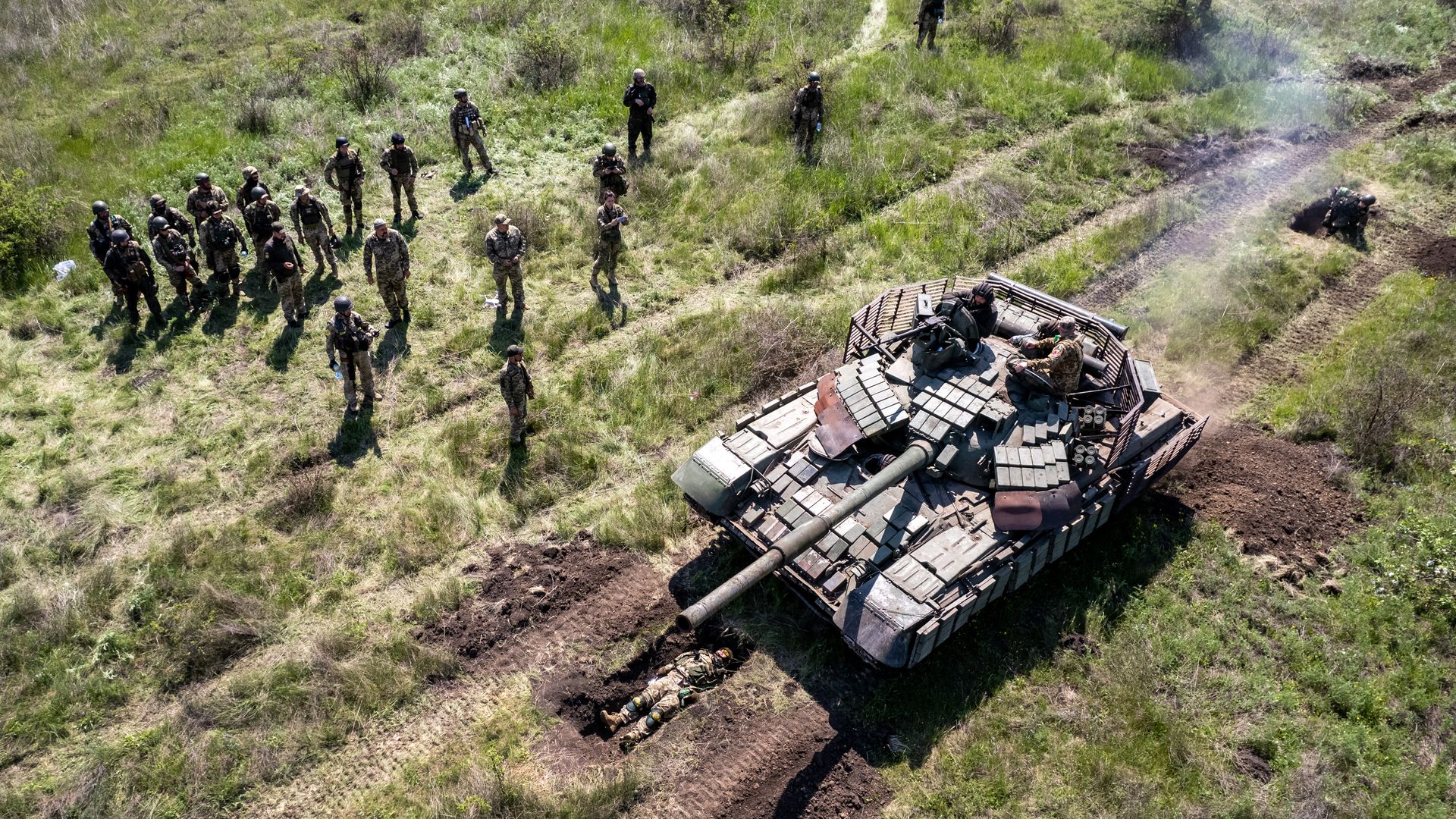6 Months Into War, Ukraine and Russia Are Both Reshaped
It has been six months since Russian forces swept into Ukraine. This is what the conflict looks like for the combatants, and to a worried continent trying to maintain solidarity.

It is a war in which violence and normality coexist — death and destruction at the 1,500-mile front and packed cafes in Kyiv, just a few hundred miles to the west.
It is a war fought in trenches and artillery duels, but defined in great part by the political whims of Americans and Europeans, whose willingness to endure inflation and energy shortages could shape the next stage of the conflict.
And it is a war of imagery and messaging, fought between two countries whose deep family ties have helped turn social media into a battlefield of its own.
No one knows how it will end. President Vladimir V. Putin of Russia, having silenced dissent, has proclaimed that “by and large, we haven’t started anything yet in earnest.” President Volodymyr Zelensky of Ukraine, emboldened by a defiant populace and a mostly united West, has played down the chances of a settlement and urged his people not to bend.
Will Western backing hold as Europe braces for the possibility of a winter with little Russian oil and gas? Will Mr. Putin, after strikes in Crimea and the killing of a nationalist commentator, escalate the war? And will Mr. Zelensky be able to sustain his nation’s determination against a nuclear-armed foe?
Mr. Putin now controls about 20 percent of the country. But he appears as far as ever from bringing Ukraine back into Russia’s fold — and there is little indication he is prepared to stop fighting.
Half a year after Russian forces massed at their neighbor’s border made their move, here is how the conflict appears to the combatants, and to a continent plunged into turmoil.

After all, Wednesday also marks six months since Russia invaded Ukraine, unleashing a war that has driven many Ukrainians from their homes, killed thousands of troops and shaken the economy. Officials warned that Russia may strike with a volley of cruise missiles, or stage show trials of Ukrainian prisoners of war in the occupied city of Mariupol.
But Mr. Zelensky said the Ukrainian authorities planned no extraordinary precautions if Kyiv, the capital, was hit. The Ukrainian government will respond “the same as now” or any other day, he said at a news conference.
In towns along the front, in Russian-occupied areas and at the sites hit by long-range missile strikes, the most intense war in Europe since World War II burns with visible force.
But acclimated to risk, Ukrainians are creeping back to a sense of normality after the shock of the winter invasion.
Regions where a majority of Ukrainians live are stable and relatively safe, the government still stands, and the army, equipped with ever-more-potent Western weaponry, remains intact.

But the cratering economy, the risk of airstrikes and the toll of attrition warfare could chip away at Ukraine’s ability to resist, he said. At the six-month mark, he said, survival is not the same as victory, or even a clear path toward it.
“We cannot stop, and we cannot move into a boring, low-intensity war,” Mr. Zagorodnyuk said. “We need to think how we can squeeze them out.”
At the least, the war is far from where Moscow had hoped it would be — a fact that Ukrainians drove home with taunts and a mocking parade this week of about 80 burned and disabled Russian tanks and military vehicles in Kyiv. Ukrainian children climbed onto the wreckage; passers-by stopped for selfies.

 Shoppers in Moscow. The Russian economy has proved more resilient to sanctions than some economists initially expected, but experts now predict a downturn.Credit...Yuri Kochetkov/EPA, via Shutterstock
Shoppers in Moscow. The Russian economy has proved more resilient to sanctions than some economists initially expected, but experts now predict a downturn.Credit...Yuri Kochetkov/EPA, via Shutterstock Filling up in St. Petersburg. ...
Filling up in St. Petersburg. ... Destroyed cars in Irpin, Ukraine, this month. More than four months into the Russian invasion, the war has evolved into a battle of inches with no end in sight.Credit...Mauricio Lima for The New York Times
Destroyed cars in Irpin, Ukraine, this month. More than four months into the Russian invasion, the war has evolved into a battle of inches with no end in sight.Credit...Mauricio Lima for The New York Times